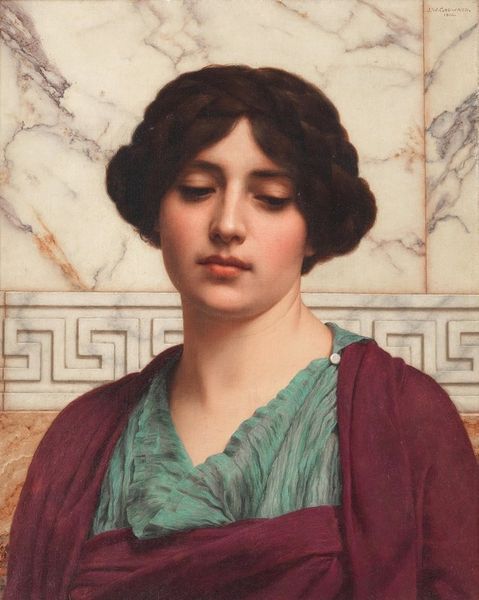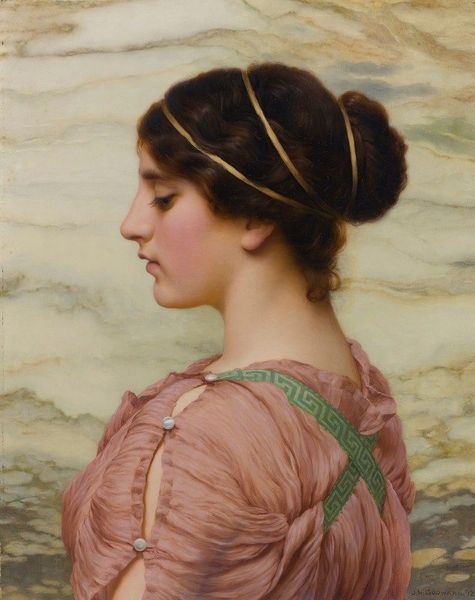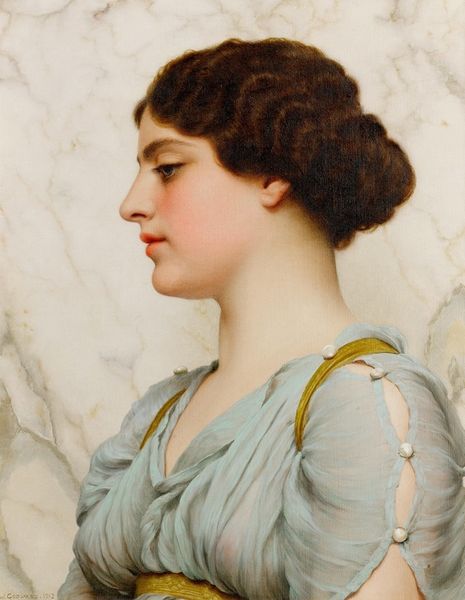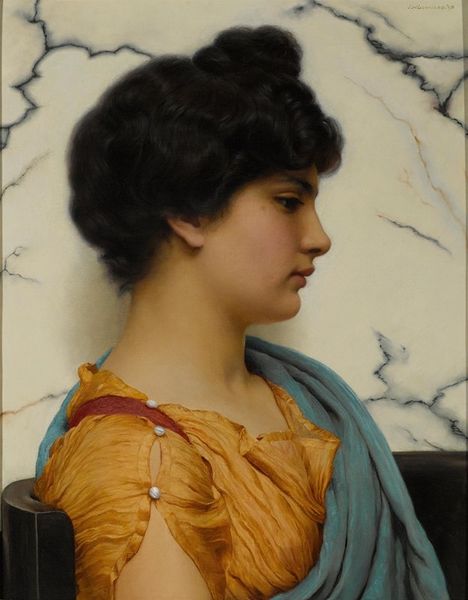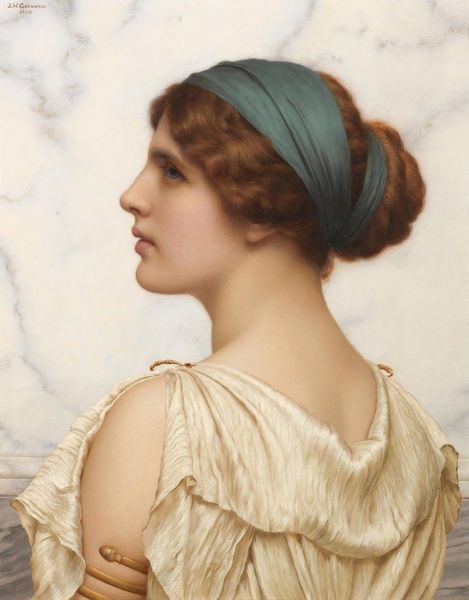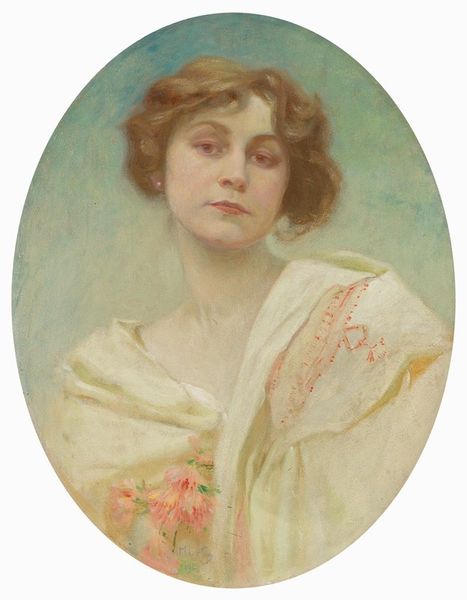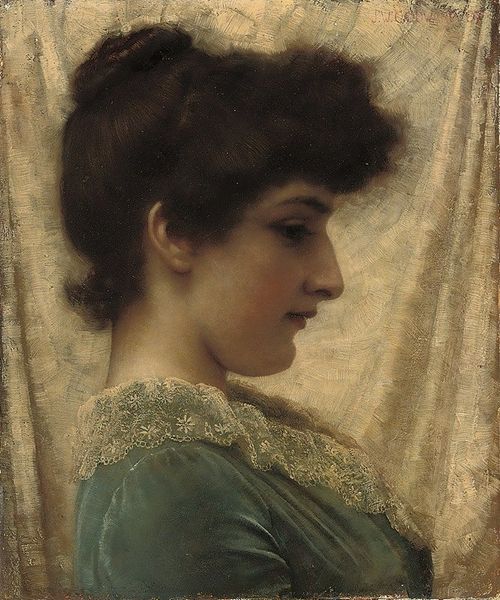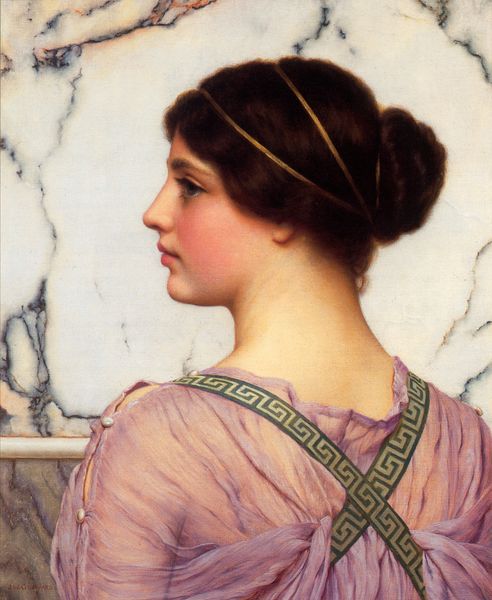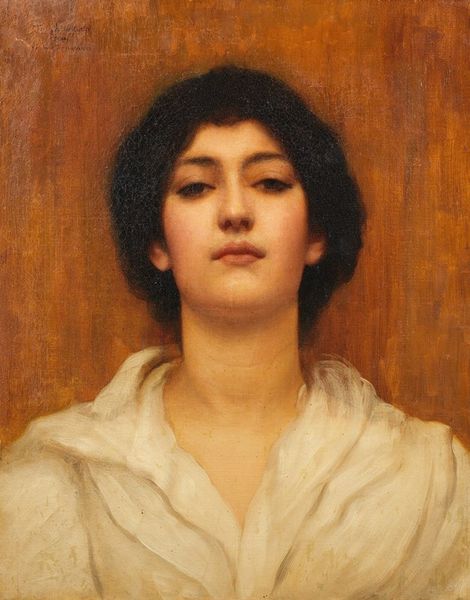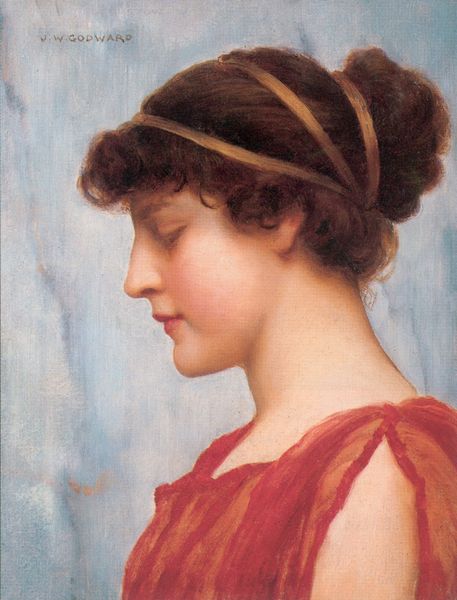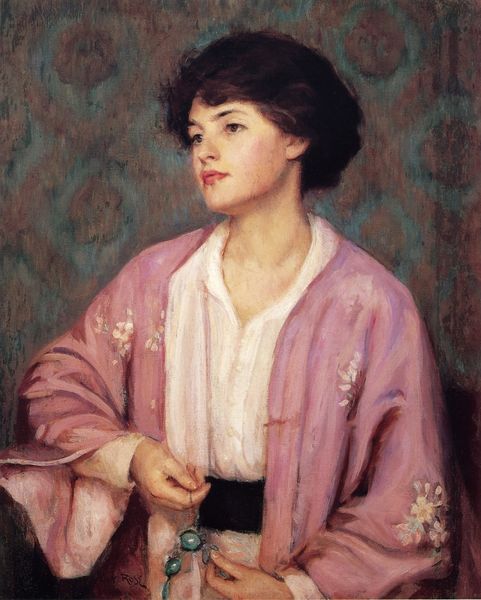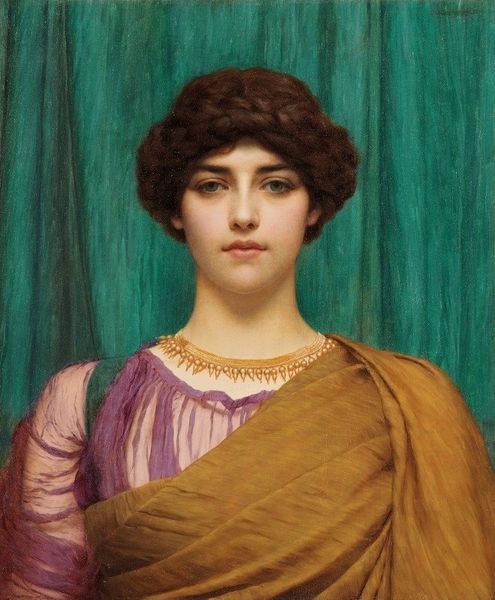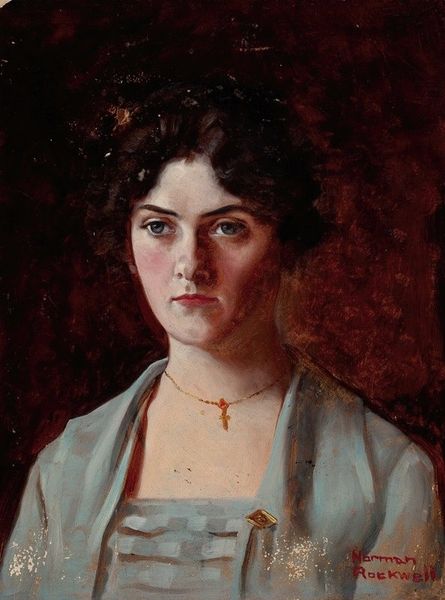
Copyright: Public Domain: Artvee
Curator: Here we have John William Godward’s painting, "Carina," from 1910. It's quite striking, isn't it? Editor: Yes, the cool tones are immediately arresting, almost spectral, but softened by the warm browns in her hair. It evokes a serene but melancholic mood, like a memory fading into mist. Curator: It's interesting you mention 'memory' because Godward, as a painter within the later stages of the Aesthetic movement, was deeply interested in constructing a nostalgic vision of antiquity through these portraits, catering to bourgeois tastes for the exotic and historical. The fact he used predominantly Italian models of working-class origin speaks to the labor and social dynamics involved in this manufactured vision. Editor: Precisely. But look closer: the composition leads us directly to her face—those pale blue eyes mirroring the color palette throughout, offset by the soft pink tones. The marble backdrop seems deliberately placed to showcase the sitter’s gentle form, her slight and calm demeanor creating a point of focus in a well balanced painting. The details in her hair and the light in her translucent dress demonstrate Godward's keen skill in this classical style. Curator: It's a style meant to recall a glorified past, and he used oil paint to construct this illusion, layering it meticulously to achieve that polished look. These aren't innocent portraits; they are carefully crafted images designed for consumption, reinforcing societal values and a particular class's imagined connection to historical grandeur. Who had access to those portraits, where they were displayed and whom the image was supposed to depict, certainly would allow to decode an intention on who should consume that image of luxury, but most important, desire to posses such object. Editor: Certainly. It’s also evident the attention given to line and texture, using variations in color that create depth and enhance the painting's overall dynamism. Her eyes, gazing at the observer, are a compositional anchor. The use of form creates a sense of immediacy despite the classicizing elements. Curator: A careful observation undoubtedly but one framed by formal devices which distract from understanding the material realities that shaped it. The brushstrokes themselves represent labor, class aspiration and an artistic marketplace at work. Editor: Perhaps so. I find that this intense engagement with form generates meaning in and of itself. Curator: Indeed. Thank you for this invigorating visual dialogue; you brought forward an insightful argument by exploring all the visual resources to describe Carina's charm. Editor: And thank you. The processes surrounding such paintings are important context to a work’s intrinsic qualities.
Comments
No comments
Be the first to comment and join the conversation on the ultimate creative platform.
